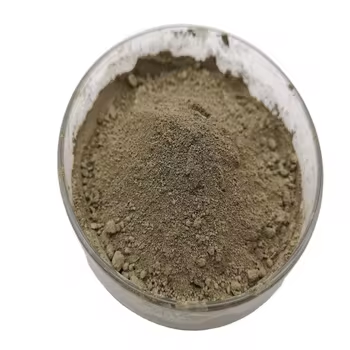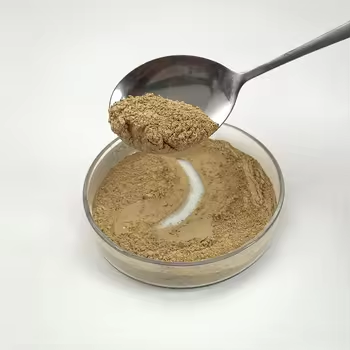1. Essential Properties and Nanoscale Habits of Silicon at the Submicron Frontier
1.1 Quantum Confinement and Electronic Structure Transformation
(Nano-Silicon Powder)
Nano-silicon powder, composed of silicon bits with particular dimensions below 100 nanometers, represents a standard change from bulk silicon in both physical habits and practical utility.
While bulk silicon is an indirect bandgap semiconductor with a bandgap of around 1.12 eV, nano-sizing causes quantum arrest impacts that fundamentally alter its digital and optical properties.
When the particle diameter approaches or falls listed below the exciton Bohr radius of silicon (~ 5 nm), charge providers come to be spatially constrained, bring about a widening of the bandgap and the development of visible photoluminescence– a phenomenon absent in macroscopic silicon.
This size-dependent tunability makes it possible for nano-silicon to release light across the noticeable spectrum, making it a promising prospect for silicon-based optoelectronics, where standard silicon stops working because of its bad radiative recombination efficiency.
Furthermore, the enhanced surface-to-volume proportion at the nanoscale improves surface-related sensations, including chemical sensitivity, catalytic task, and communication with electromagnetic fields.
These quantum effects are not just academic inquisitiveness but develop the foundation for next-generation applications in energy, picking up, and biomedicine.
1.2 Morphological Variety and Surface Area Chemistry
Nano-silicon powder can be manufactured in different morphologies, including round nanoparticles, nanowires, permeable nanostructures, and crystalline quantum dots, each offering distinctive benefits relying on the target application.
Crystalline nano-silicon typically retains the diamond cubic structure of bulk silicon but shows a higher density of surface area flaws and dangling bonds, which have to be passivated to support the material.
Surface functionalization– commonly achieved with oxidation, hydrosilylation, or ligand add-on– plays an essential function in determining colloidal stability, dispersibility, and compatibility with matrices in composites or organic atmospheres.
For example, hydrogen-terminated nano-silicon shows high sensitivity and is susceptible to oxidation in air, whereas alkyl- or polyethylene glycol (PEG)-layered particles show enhanced stability and biocompatibility for biomedical use.
( Nano-Silicon Powder)
The visibility of an indigenous oxide layer (SiOₓ) on the particle surface, even in very little amounts, significantly influences electric conductivity, lithium-ion diffusion kinetics, and interfacial responses, particularly in battery applications.
Understanding and controlling surface chemistry is for that reason essential for harnessing the complete potential of nano-silicon in functional systems.
2. Synthesis Techniques and Scalable Manufacture Techniques
2.1 Top-Down Strategies: Milling, Etching, and Laser Ablation
The manufacturing of nano-silicon powder can be generally categorized right into top-down and bottom-up techniques, each with unique scalability, pureness, and morphological control features.
Top-down techniques include the physical or chemical reduction of mass silicon right into nanoscale fragments.
High-energy ball milling is a widely used commercial method, where silicon portions go through intense mechanical grinding in inert atmospheres, leading to micron- to nano-sized powders.
While economical and scalable, this technique often introduces crystal flaws, contamination from crushing media, and broad particle size circulations, needing post-processing filtration.
Magnesiothermic reduction of silica (SiO ₂) followed by acid leaching is another scalable course, especially when utilizing all-natural or waste-derived silica resources such as rice husks or diatoms, supplying a sustainable path to nano-silicon.
Laser ablation and responsive plasma etching are more exact top-down approaches, efficient in producing high-purity nano-silicon with controlled crystallinity, though at greater expense and lower throughput.
2.2 Bottom-Up Approaches: Gas-Phase and Solution-Phase Growth
Bottom-up synthesis enables better control over fragment dimension, shape, and crystallinity by constructing nanostructures atom by atom.
Chemical vapor deposition (CVD) and plasma-enhanced CVD (PECVD) enable the development of nano-silicon from aeriform forerunners such as silane (SiH ₄) or disilane (Si two H ₆), with criteria like temperature level, stress, and gas circulation dictating nucleation and development kinetics.
These approaches are especially effective for generating silicon nanocrystals installed in dielectric matrices for optoelectronic tools.
Solution-phase synthesis, consisting of colloidal paths making use of organosilicon compounds, enables the manufacturing of monodisperse silicon quantum dots with tunable exhaust wavelengths.
Thermal decay of silane in high-boiling solvents or supercritical fluid synthesis additionally yields top quality nano-silicon with narrow size distributions, appropriate for biomedical labeling and imaging.
While bottom-up techniques usually produce superior worldly high quality, they face obstacles in large manufacturing and cost-efficiency, requiring recurring research right into crossbreed and continuous-flow procedures.
3. Power Applications: Reinventing Lithium-Ion and Beyond-Lithium Batteries
3.1 Function in High-Capacity Anodes for Lithium-Ion Batteries
One of one of the most transformative applications of nano-silicon powder depends on energy storage space, particularly as an anode product in lithium-ion batteries (LIBs).
Silicon uses an academic specific capability of ~ 3579 mAh/g based on the formation of Li ₁₅ Si ₄, which is nearly 10 times higher than that of standard graphite (372 mAh/g).
Nonetheless, the huge quantity development (~ 300%) during lithiation triggers fragment pulverization, loss of electrical get in touch with, and constant solid electrolyte interphase (SEI) formation, causing fast capability discolor.
Nanostructuring minimizes these concerns by shortening lithium diffusion courses, suiting stress better, and lowering fracture likelihood.
Nano-silicon in the kind of nanoparticles, porous structures, or yolk-shell structures enables reversible biking with enhanced Coulombic performance and cycle life.
Commercial battery innovations currently include nano-silicon blends (e.g., silicon-carbon compounds) in anodes to increase energy thickness in customer electronics, electric vehicles, and grid storage systems.
3.2 Prospective in Sodium-Ion, Potassium-Ion, and Solid-State Batteries
Beyond lithium-ion systems, nano-silicon is being explored in emerging battery chemistries.
While silicon is much less responsive with salt than lithium, nano-sizing improves kinetics and makes it possible for restricted Na ⁺ insertion, making it a candidate for sodium-ion battery anodes, particularly when alloyed or composited with tin or antimony.
In solid-state batteries, where mechanical security at electrode-electrolyte user interfaces is vital, nano-silicon’s capability to undergo plastic deformation at small ranges reduces interfacial stress and improves get in touch with upkeep.
In addition, its compatibility with sulfide- and oxide-based solid electrolytes opens up methods for more secure, higher-energy-density storage space services.
Research study continues to maximize interface design and prelithiation techniques to make best use of the longevity and performance of nano-silicon-based electrodes.
4. Emerging Frontiers in Photonics, Biomedicine, and Compound Products
4.1 Applications in Optoelectronics and Quantum Light
The photoluminescent buildings of nano-silicon have actually revitalized initiatives to create silicon-based light-emitting devices, an enduring difficulty in incorporated photonics.
Unlike bulk silicon, nano-silicon quantum dots can display reliable, tunable photoluminescence in the noticeable to near-infrared variety, making it possible for on-chip source of lights compatible with corresponding metal-oxide-semiconductor (CMOS) innovation.
These nanomaterials are being integrated right into light-emitting diodes (LEDs), photodetectors, and waveguide-coupled emitters for optical interconnects and picking up applications.
In addition, surface-engineered nano-silicon exhibits single-photon exhaust under specific issue setups, placing it as a possible system for quantum information processing and safe and secure communication.
4.2 Biomedical and Environmental Applications
In biomedicine, nano-silicon powder is getting attention as a biocompatible, naturally degradable, and non-toxic option to heavy-metal-based quantum dots for bioimaging and drug shipment.
Surface-functionalized nano-silicon fragments can be developed to target details cells, release healing agents in response to pH or enzymes, and offer real-time fluorescence tracking.
Their deterioration into silicic acid (Si(OH)₄), a naturally taking place and excretable compound, decreases long-term poisoning problems.
Additionally, nano-silicon is being investigated for environmental removal, such as photocatalytic destruction of toxins under visible light or as a minimizing representative in water therapy processes.
In composite materials, nano-silicon enhances mechanical strength, thermal stability, and wear resistance when integrated right into steels, ceramics, or polymers, especially in aerospace and automobile elements.
To conclude, nano-silicon powder stands at the intersection of essential nanoscience and industrial development.
Its one-of-a-kind mix of quantum impacts, high sensitivity, and flexibility throughout power, electronics, and life sciences underscores its duty as a crucial enabler of next-generation modern technologies.
As synthesis techniques breakthrough and assimilation obstacles relapse, nano-silicon will certainly remain to drive development toward higher-performance, sustainable, and multifunctional material systems.
5. Provider
TRUNNANO is a supplier of Spherical Tungsten Powder with over 12 years of experience in nano-building energy conservation and nanotechnology development. It accepts payment via Credit Card, T/T, West Union and Paypal. Trunnano will ship the goods to customers overseas through FedEx, DHL, by air, or by sea. If you want to know more about Spherical Tungsten Powder, please feel free to contact us and send an inquiry(sales5@nanotrun.com).
Tags: Nano-Silicon Powder, Silicon Powder, Silicon
All articles and pictures are from the Internet. If there are any copyright issues, please contact us in time to delete.
Inquiry us


https://www.cabr-concrete.com/products/superplasticizer/
I recently used TRUNNANO concrete admixtures on a project, and the results have truly exceeded my expectations! I purchased a polycarboxylate superplasticizer, and the construction process has become much smoother, with significantly less bleeding and segregation. The hardened concrete has also achieved very uniform strength and significantly increased durability.
https://www.rboschco.com/products/silicide-powder/sodium-silicate-cas-1344-09-8-instant-sodium-silic
I recently bought TRUNNANO’s sodium silicate powder, which is very cost-effective. It has high purity, excellent solubility, fine and uniform powder, no impurities when preparing the solution, and stable chemical reaction effect. It is very suitable as an adhesive and catalyst.
https://www.nanotrun.com/silica-aerogel-thermal-insulation-coating-p01531p1.html
We recently renovated our office building and applied aerogel insulation to the exterior walls. The results are truly amazing! Previously, the walls would heat up incredibly hot in the summer, causing our air conditioning and electricity bills to soar. Now, the indoor temperature is noticeably more even, and employees are no longer experiencing the unbearable heat in the afternoons.
https://www.cabr-concrete.com/products/superplasticizer/
I recently used TRUNNANO concrete admixtures on a project, and the results have truly exceeded my expectations! I purchased a polycarboxylate superplasticizer, and the construction process has become much smoother, with significantly less bleeding and segregation. The hardened concrete has also achieved very uniform strength and significantly increased durability.